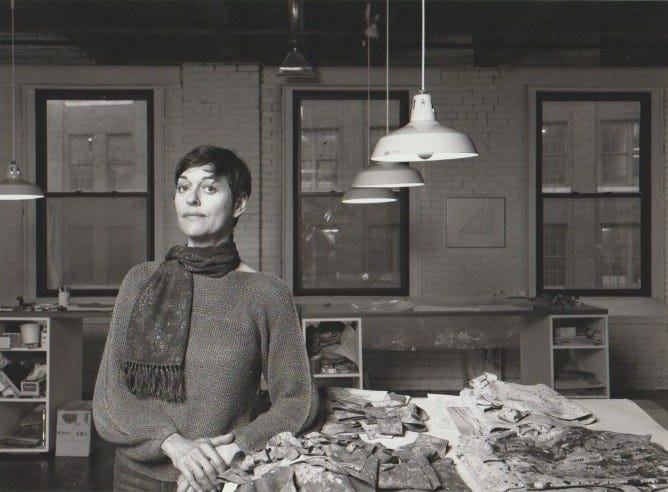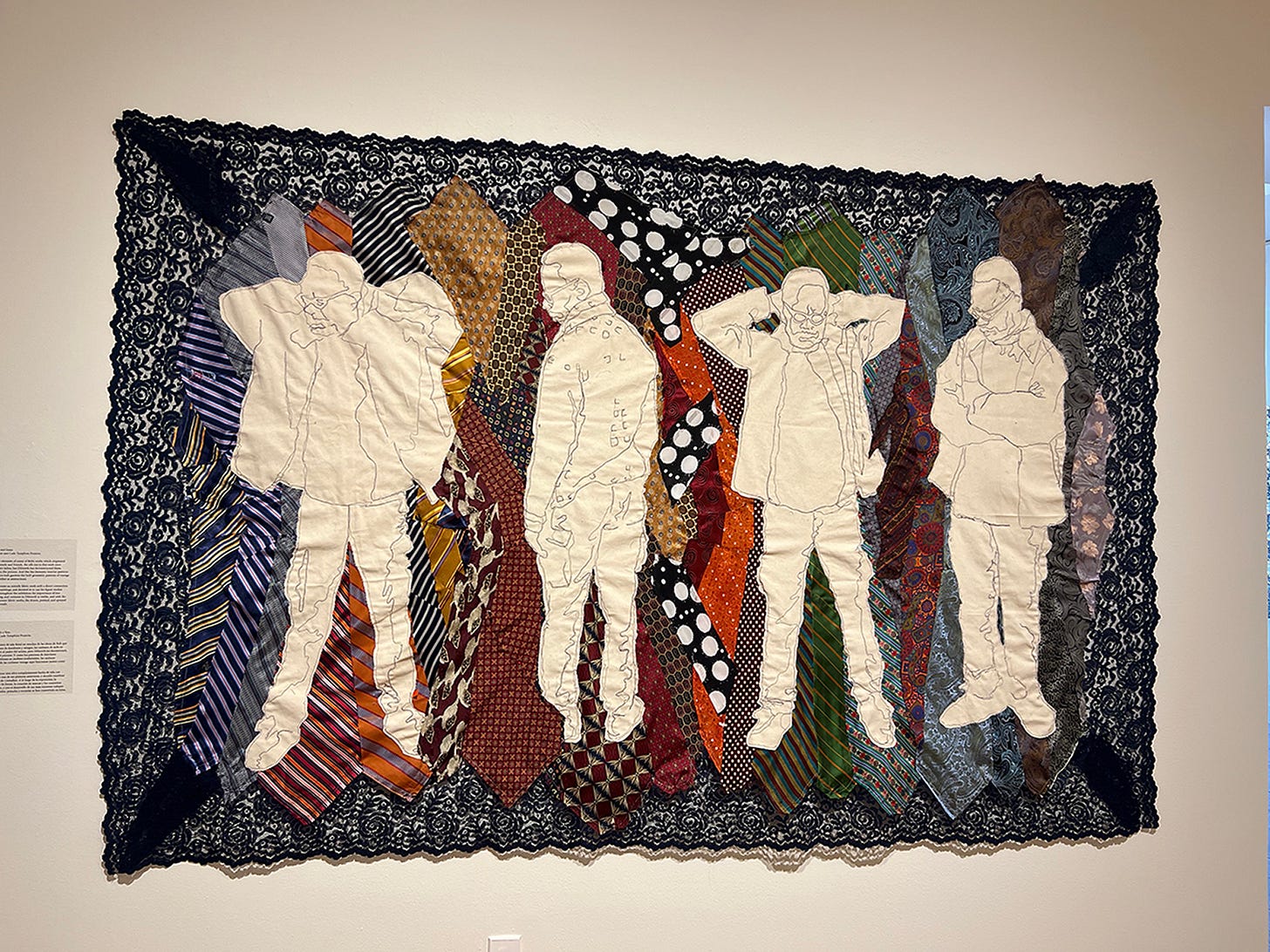Moving to the future, rooted in the past
Globe stories on Jo Sandman, Mario Diacono, Bob Dilworth, and "Original Sisters"

Happy New Year, my friends. Today’s roundup of my recent stories in the Boston Globe begins with two nonogenarians forging ahead with their careers.
First, Jo Sandman, now 93, a beloved Boston-area painter and sculptor whose hallmark has been restless, nervy, inquisitive experimentation with materials. Maybe she picked that up during the summer of 1951, when she was 20 and studied at Black Mountain College with fellow classmates Robert Rauschenberg and Cy Twombly. Her experience there “made very clear that living the life of an artist was not only a possibility, but a reality,” she said. “That it was my destiny.”
But I also get the sense that Jo is inherently a boundary-pusher, and art has been the perfect place for her to move continually into unknown territory.
In recent years, Jo and her family have been working with independent curator Katherine French (former executive director of the Danforth Art Museum) to inventory all the work in Jo’s 1800-square-foot studio at Brickbottom Artists Building and place it in public collections. The result: the Jo Sandman Legacy Project has donated up to 2,000 pieces to roughly 50 museums. The result: several solo shows, and a new one, “Jo Sandman: Skin Deep,” opening at the Portland Museum of Art in February.
I chatted with Jo and Katherine at Brickbottom. Here’s the Globe story.

Mario Diacono is back! At 94, he has reopened the Boston gallery he closed in 2008. The Italian art dealer started his first gallery on Peterborough Street in 1985, then he moved to South Street, and finally to the Ars Libri bookstore on Harrison Avenue. Running those earlier iterations of Mario Diacono Gallery, he was largely supported by Achille and Luigi Maramotti of the Max Mara clothing company, and in 2007 they hired him to manage and curate their collection in Italy.
But Mario never really left Boston. He became a transatlantic commuter, and lived in Brookline with his wife, Claudette Asselin, who died last year. Now that she’s gone, he’s back to being a gallerist. This time on Beacon Street near the State House. He has signed a three-year lease.
Mario’s intellectual rigor and pinpoint focus have not changed. He calls the first show – really a preview – “Bauhuas?” up through Jan. 11, “a manifesto exhibition for what I want to do.” It features the sculpture above by an unknown artist, which he links to a drawing by Bauhaus artist, designer, and dancer Oskar Schlemmer. He planned “Bauhaus?” to “connect the art I will be showing in the next two or three years with the art of the 20th century, even if it is very, very contemporary art,” he said.
For every show he has mounted, Mario has written an accompanying essay placing the artwork in its historical context. That continues. “Writing a text is 50 percent of the gallery,” he said. “I am doing a gallery from a critical point of view.”
The next show features painter Luisa Rabbia. The opening is on Jan. 18, Mario’s 95th birthday. Much more in this story in the Globe.

When illustrator Anita Kunz had time on her hands during the COVID lockdown, she took to researching and painting one extraordinary woman every day. While she’s not painting one a day anymore, she’s still at it, and has now painted more than 450 portraits. There are 287 on view in “Ordinary Sisters, Portraits of Tenacity and Courage” at the Norman Rockwell Museum through May 26.
Curator of Exhibitions Jane Dini has organized the massive show in a grid pattern across three galleries. There’s no particular order – no hierarchy, perhaps because hierarchies have erased many women from the history books for as long as there have been history books, and Kunz’s project is really a reclamation of those histories.
There are women I’d heard of, like Ruth Bader Ginsburg and Greta Thunberg and prima ballerina Maria Tallchief. But also so many I did not know – like young Black chemist Alice Ball. In 1915, she developed the first effective leprosy treatment, decades before antibiotics. Or Saint AEbbe the Younger, who, legend has it, chopped off her nose and those of her monastic charges to keep them safe from rape by Viking invaders near the coast of Scotland more than a millennium ago.
More on Kunz’s heartening project, and more ordinary sisters, in my review.

It was a joy to visit painter and experimental textile artist Bob Dilworth at his home studio in Providence, and Globe photographer Suzanne Kreiter clearly also had a blast. Bob’s show, “When I Remembered Home” is at Fitchburg Art Museum through Sunday, Jan. 12, and he’s giving a gallery talk on Saturday, Jan. 11, at 2pm.
Bob’s paintings – and now his textile artworks – focus on portraits, and in this exhibition, they stem from research he’s done on visits to his childhood home in Lawrenceville, Virginia. Fabric came into the work when the artist was visiting his family there. Back at home, he’d ask himself, “How can you make a portrait from a conversation?”
“I had to bring some physical things back that really reflected them. I was getting bedspreads and rugs and curtains and designs and patterns to help identify the spaces they lived in,” Bob said. Brocade, lace, old ties, and denim from jeans became part of the paintings. His works are at once ethereal and dense with memory; they seem rooted in the primordial soil of his childhood – that invisible realm of love, imagination, and growing that forges a soul.
There’s plenty more about Bob in this week’s Working Artist column – including Suzanne’s terrific photos.




Thanks Cate! We have a lot to learn from our elders. What passion and energy 🙌